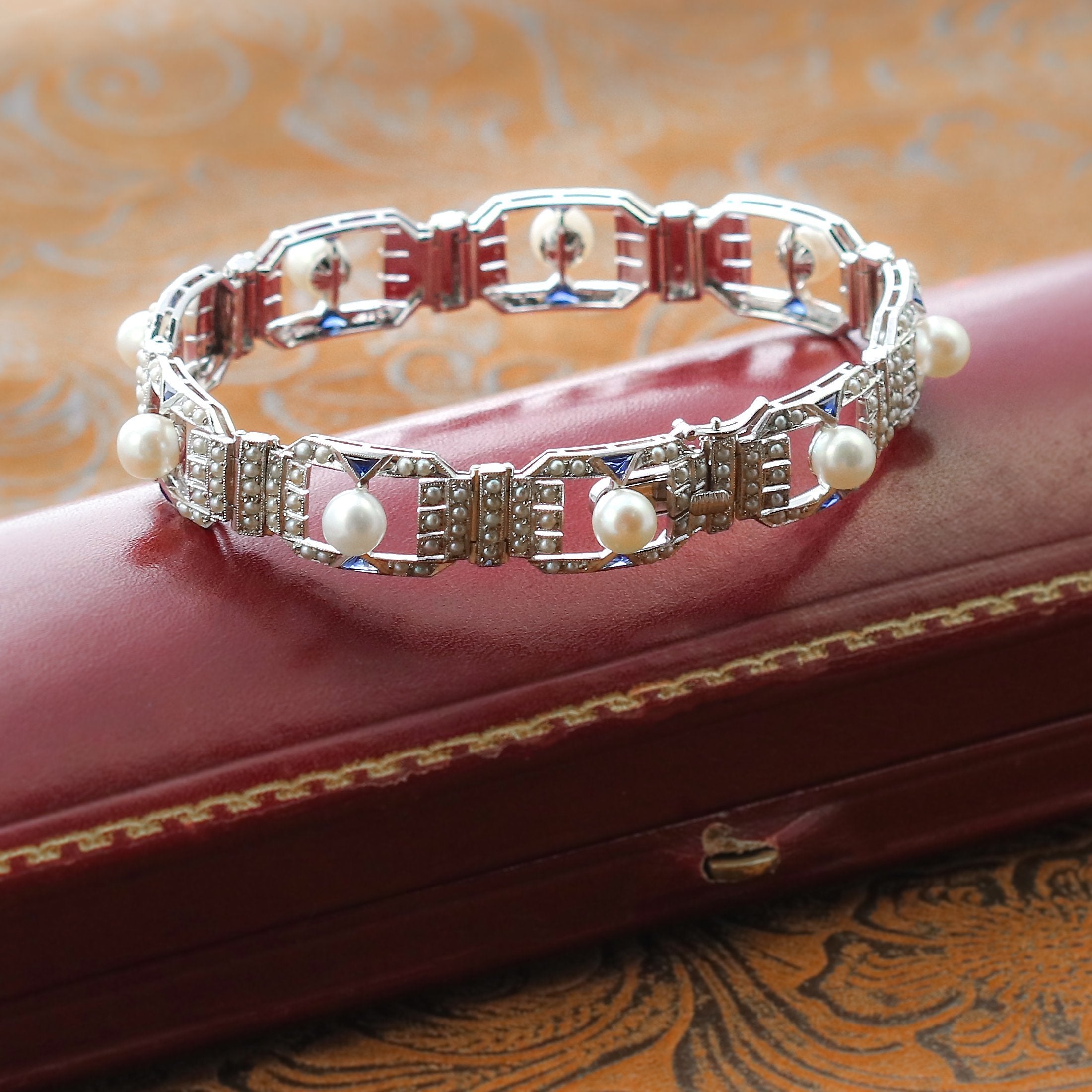
November30
Understanding the Different Types of Pearls
Article by: Joseph Denaburg
To people who are familiar only with the other-worldly beauty of pearls, the distinction between freshwater, saltwater, and cultured pearls can be a mystery. Many people think that the first two are “real” while cultured pearls are imitations. The fact is that the majority of the pearls sold in fine jewelry stores today are cultured whether they are saltwater or freshwater pearls.
Natural pearls, or pearls that were harvested from mollusks by divers, are very rare and usually are antiques. Natural pearls are rarely perfectly round and are usually not very large. The sad reality is that the mollusks that produce pearls “in the wild” are now so depleted that a string of natural pearls would only be within the price range of the incredibly wealthy.
A natural pearl is formed when a parasite or foreign matter make their way into a mollusk’s shell. Cultured pearls involve surgical placement of the irritant. The only way most experts can tell the difference between natural and cultured pearls is through x-rays.
Cultured pearls are a good example of human intervention in nature. When an oyster (mollusk) is 2-3 years old an irritant is surgically inserted and it forms a protective layer of nacre. It continues to add layers over time. The longer it remains unmolested, the thicker the nacre becomes and the larger and more valuable the pearl is. Most pearls are allowed to remain in the oyster between 8 months and two years.
Freshwater and saltwater pearls are both cultured but there are differences that you can see, both in appearance and price. Saltwater pearls are generally more costly because only one can be grown at a time, mainly in the lagoons of Eastern Asia. Freshwater pearls generally come from China and Japan and are grown in lakes, ponds, and rivers. Freshwater mollusks can grow several pearls at one time, sometimes up to a couple of dozen per mollusk.
Saltwater pearls are generally more lustrous and reflective while a freshwater pearl has a soft luster that seems to glow from its heart. A freshwater pearl’s luster is due to its composition, nearly 100% nacre, and many people are surprised to find that they prefer the luster of the freshwater to the iridescence of a saltwater pearl.
Both freshwater and saltwater pearls can be grown in different colors by adding certain metals to the oyster beds. However, saltwater pearls generally are traditional white or Tahitian black. If you see a strand of lustrous rose colored pearls, they are likely freshwater pearls.
Freshwater pearls come in many shapes and sizes while saltwater pearls are generally round. You can get freshwater pearls that are round, button or oval shaped or baroque. They come in sizes as small as a grain of rice, which are often used on wedding gowns.
You can generally tell the quality of a pearl by looking at your reflection in the surface. If you can see yourself clearly it is a good quality pearl. It should have evenly uniform color but don’t expect it to be perfectly round, which is relatively rare. Cultured pearls, both freshwater and saltwater, are quality rated on the thickness of the nacre, how smooth and unblemished the surface is, and the brilliance and reflective properties of the nacre.

